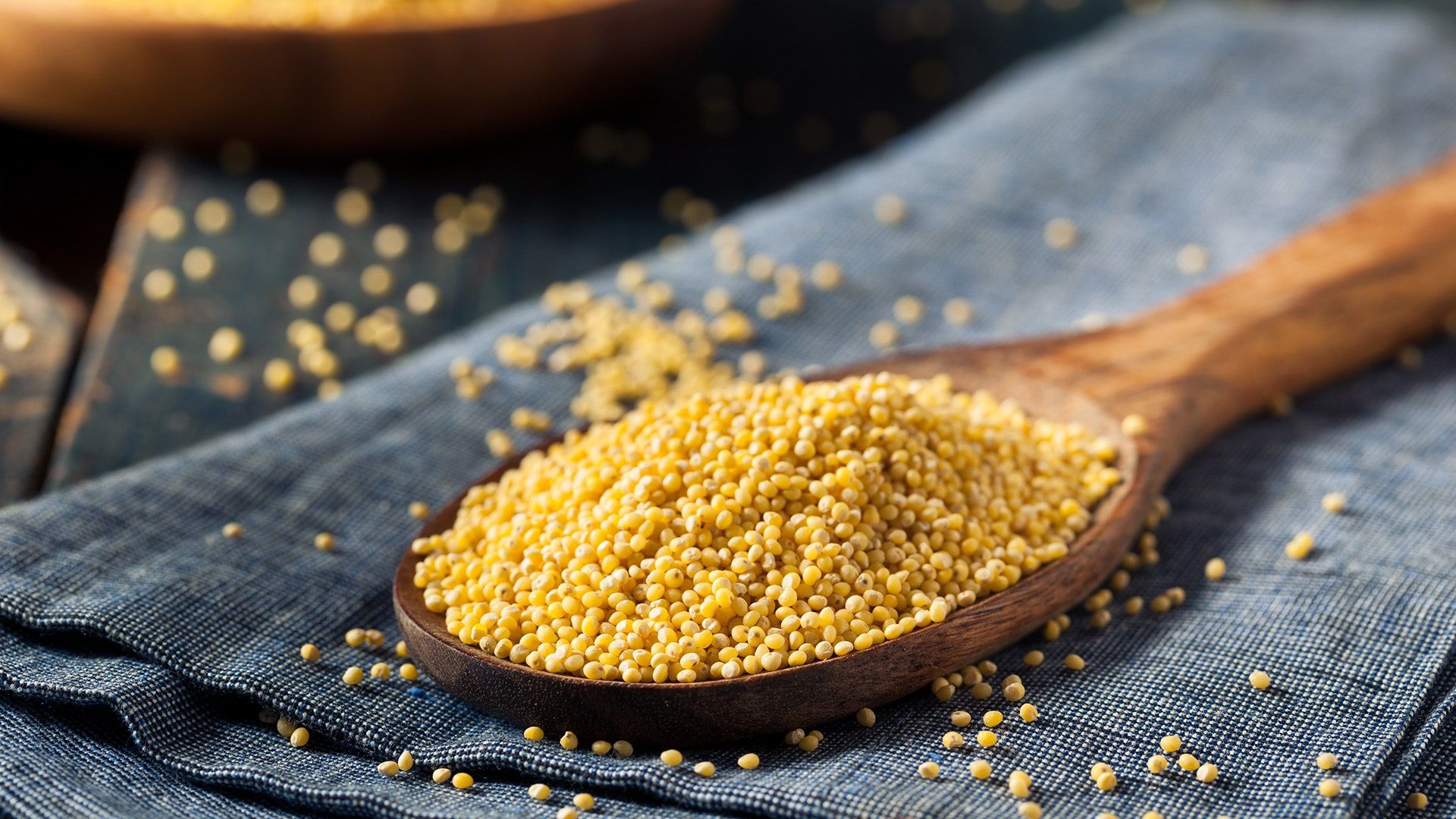Millets are a group of small-seeded grasses that have been cultivated for thousands of years for their nutritious grain and forage crops. These hardy crops are able to grow in harsh conditions such as drought, poor soil, and high temperatures, making them an important food source for many communities around the world, especially in semi-arid regions of Africa, Asia, and South America.
There are several different types of millet, including little millet, finger millet, foxtail millet, barnyard millet, and Kodo millet. Each type has its own unique flavor, texture, and nutritional profile. Millets are a good source of protein, fiber, vitamins, and minerals, including B vitamins, iron, calcium, and magnesium.
In recent years, interest in millets has been growing due to their perceived health benefits and as a response to the increasing demand for gluten-free and non-GMO food options. They are often used as a substitute for wheat, rice, and other staple grains in a variety of dishes, including porridge, bread, and pasta.
Millets are also considered to be environmentally friendly crops. They have a low water requirement, making them ideal for growing in areas with limited access to water. They also have a short growing season, which means that farmers can grow multiple crops in a year, helping to improve food security and increase their income.
Let’s look at the type of millet:
Kodo millet is a type of millet that is grown in India and some parts of Africa. It is used for food and bird seed. Kodo millet is a good source of carbohydrates and fiber.
Finger millet is a type of millet that is popular in Africa. It is used for food, beer, and as food for livestock. Finger millet is high in fiber and carbohydrates.
Foxtail millet is another type of millet that is widely grown in India and some parts of China. It is used for food and bird seed. Foxtail millet is a good source of carbohydrates and protein.
Barnyard millet, also known as Jhangora, is a type of millet that is grown mainly in India and some parts of China. It is a highly nutritious grain that is gluten-free and a good source of carbohydrates, fiber, protein, and various vitamins and minerals.
Little millet, also known as Panicum sumatrense, is a type of grain that is native to India. It is highly nutritious, containing high levels of fiber, protein, vitamins, and minerals. Some of the health benefits associated with consuming little millet include improved digestion, better blood sugar control, reduced risk of heart disease, and weight management.
Despite their numerous benefits, millets are not as widely used or recognized as other staple crops. This is due in part to a lack of knowledge and understanding about the crops, as well as limited availability in the global market.
In conclusion, millets are a nutritious and versatile crop with a rich history and numerous benefits. As the demand for healthy, sustainable, and gluten-free food options continues to grow, it is likely that the popularity of millets will continue to increase. With more research and investment, the potential of these crops can be fully realized and they can play an important role in meeting the food needs of a growing global population
